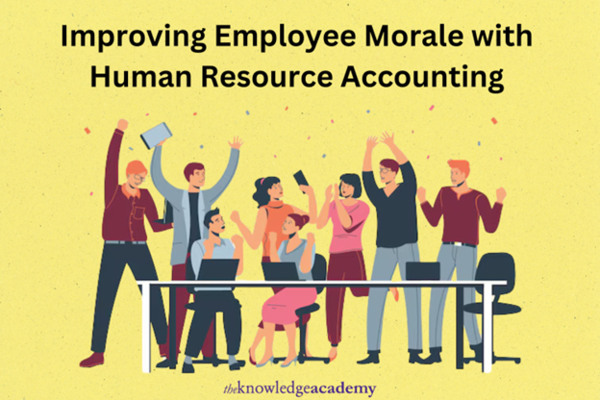Why Tutoring Could Be a Game Changer
The 11 Plus (or 11+) exam is an entrance test taken by students in the UK in their last year of primary school. It’s used by grammar schools and some private schools to select pupils based on academic ability.
Did you know the 11 Plus was originally designed to identify the top 25% of students? Talk about pressure!
So, the exam usually covers:
- Verbal Reasoning: Tests a child’s reasoning and understanding of language.
- Non-verbal Reasoning: Focuses on shapes, patterns, and logic.
- Mathematics: Generally includes arithmetic, basic algebra, and geometry.
- English: Reading comprehension, vocabulary, and writing skills.
Some areas still use the old-school handwritten exams. No multiple-choice bubbles there!
The 11 plus exams often cover a wide range of subjects, so tutoring helps solidify foundational knowledge in these areas. Their personalised approach can be a game changer, especially if a child struggles with certain areas or needs more challenging material.
Think of tutoring as an investment not just in passing an exam, but in nurturing a well-rounded, confident young learner. It’s like having a personal coach for the brain, ensuring your child’s academic journey is enriching and fun.
Tutors focus on developing key skills like logical thinking and analytical reasoning, which are extremely important for lifelong learning as well.
Why Consider 11 Plus Tutoring?
A good tutor assesses where your kid stands, identifies strengths and points for improvement. Also, they customise their teaching approach accordingly. More effective than general classroom teaching.
Children learn at different paces and in varied styles (visual, auditory, kinesthetic). A tutor can adapt lessons to suit a child’s unique way of learning. According to Jim Kwik, there are four different brain types, and each of them has its own preferred way of doing the job.
Unlike a classroom setting, where the pace might be too fast or too slow, a tutor can align their teaching style with your child’s learning needs, making the experience more engaging.
Tutors can provide the encouragement and professional support your kid needs to boost their academic self-esteem.
Success always breeds confidence. Regular tutoring sessions provide a structured environment for your child to experience small wins, building up their self-esteem and motivation to keep going. That is why it can alleviate anxiety!
Tutors can teach effective time management tactics, ensuring kiddo can tackle all questions within the exam duration. This regular practice can greatly improve a child’s performance.
One-on-one sessions allow for deeper dives into subjects, fostering a more thorough understanding.
Exam Preparation
Preparing for exams can be daunting for your little one. Tutors will provide comprehensive practice papers, timed exercises, and constructive feedback, helping your child to make better steadily over time.
Tutoring helps mitigate this by familiarising students with exam formats and strategies, making the entire process less intimidating and more calm. The exam format can vary wildly depending on location. It’s like academic roulette!
Regular tutoring sessions together promote a sense of routine, teaching children valuable study habits. It will up critical thinking and techniques that go beyond the 11 Plus exam, benefiting overall academic performance.
It’s not just about working hard but more working smart.
Encouraging this critical thinking skill across subjects can help children understand and appreciate the interconnectedness of different areas of knowledge.
Together they will learn how to allocate time effectively, balancing exam practice with other schoolwork and activities.
What Makes a Good 11 Plus Tutor?
Look for tutors who have a strong background in education and experience with the 11 Plus curriculum. They should understand the intricacies of the exam and the common pitfalls students face.
Try at least one lesson so you can understand what you’re dealing with. Lessons should be interactive and engaging, sparking a child’s interest and motivation.
A great tutor is patient, adapting their teaching methods to fit your child’s learning style. Prefer clear communications, ensuring progress is monitored and clear goals are set high.
Stay involved in their preparation. While it’s important to prepare, balance is key. Tutoring should complement your kiddo’s schooling without overwhelming them. Encourage breaks and fun activities to keep them refreshed.
Always asking about what they learned in their tutoring sessions shows you’re supportive and interested.
Actually, 11+ tutoring has much broader educational benefits. Beyond the 11 Plus, the skills and habits formed through tutoring can provide lasting educational benefits, fostering a love of learning.
Also, interacting with a tutor provides positive adult role models outside of parents and school teachers, which can help build social skills and confidence. When a child feels more confident, they’re likely to perform better during the exam, handling questions and time pressure with greater ease.
One Size Doesn’t Fit All
Keep in mind, tutoring isn’t a one-size-fits-all solution. Some children might thrive with self-study or parental guidance, while others benefit immensely from professional tutoring. Gauge what fits best for your little one’s personality, learning style, and comfort.
Exploring New Perspectives
Sometimes, children find it easier to engage with someone outside the family for academic pursuits. A good tutor creates a positive, pressure-free learning environment where questions are encouraged, mistakes are viewed as learning opportunities, and intellectual curiosity is nurtured.
Holistic Development
- Emotional Intelligence: They can also play a role in developing your child’s emotional intelligence, teaching them how to handle stress, setbacks, and how to approach learning with a positive mindset.
- Interpersonal Skills: One-on-one tutoring can enhance communication skills and foster a comfortable environment for asking questions and expressing doubts.
Long-Term Benefits
- Adaptability: Kids are incredibly adaptable, and the right tutor can harness this flexibility, instilling resilience and a growth mindset.
- Academic Success: The skills and knowledge gained from 11 plus tutoring often set a solid foundation for future academic success.
- Life Skills: Problem-solving, critical thinking, and time management are skills that will benefit children throughout life, far beyond their school years.
Knowing your child has a learning ally can alleviate some of the natural parental anxieties about their academic journey.
Core Study Techniques
Encourage your kiddo to recognize patterns in numbers and equations. This can simplify problems and make them more approachable.
1. Quick Calculation Techniques
Start with engaging and intuitive methods to nurture a love for maths.
- Doubling and Halving: Simplifies multiplication. For example, ( 12 x 15 ) is easier when broken into ( 12 x 10 + 12 x 5 ).
- Base Method: Use a base like 10 or 100. For ( 96 x 97 ), think of them as slightly less than 100 (base). It becomes ( (100-4) x (100-3) ).
- Magic of 9’s: Multiplying by 9—use your fingers for a quick trick. For 9×3, put down your third finger, and the remaining fingers show 2 (before the folded finger) and 7 (after the folded finger), giving you 27.
2. Memorization Hacks
- Mnemonics: Use mnemonics for key concepts. For instance, remembering these words for spelling or historical dates can turn rote memorization into a playful activity.
- Memory Palace: As mentioned earlier, placing bits of information in a familiar mental space can help children recall better. Imagine your living room and place a multiplication fact in each corner.
- Songs and Rhymes: Turn multiplication tables or historical facts into catchy tunes. Music can be a powerful memory aid.
3. Fun and Engagement
Plenty of apps are designed to make learning fun and interactive. Apps like Prodigy turn learning into a game.
Try some colourful charts, graphs, or even create a maths board game. Visual cues will significantly enhance understanding and retention.
Linking maths problems to real-world scenarios helps in better understanding. Like, if you’re baking, have them measure ingredients or calculate the total cost of items at the store.
4. Scheduling and Consistency
Regular, short but focused sessions can be more effective than long, sporadic ones. Consistency is key.
Pomodoro technique (25 min study, 5 min break) — give it a fly. Little rewards after completing a task will keep motivation high.
Engaging a tutor for 11 plus will be incredibly beneficial for your little one. Keep in mind that every child is unique. What works for one may need tweaking for another fella. But keep it lighthearted, keep it engaging, and make sure learning always feels like an adventure.
Giving Kids a Mental Toolkit
We all know about the “circle and move on” technique—when you put aside the question you don’t know the answer to and return to that circled question later. It’s a classic for a reason—super effective! But let’s add a few more tricks to your kiddo’s arsenal, shall we?
- Elimination Game: Teach kids to cross out obviously wrong answers. Even if they’re not 100% sure, narrowing down the options can boost their chances.
- Guesstimate and Go: For maths problems, encourage rough estimates. If they can ballpark the answer, it might help them spot the right option.
- Keywords are Key: Train them to underline important words in the question. It’s like creating a mini-roadmap to the answer.
- Time Check Trick: Suggest they quickly jot down the time they start each section. It’s a sneaky way to keep track without constantly clock-watching.
- Breathe and Believe: Teach a quick calming technique—maybe three deep breaths—to use when they feel stressed. A clear head is a smart head, right?
- Double-Check Dance: If they finish early, don’t let them sit idle. Encourage a thorough review, maybe even working backwards through the paper for a fresh perspective.
Health Checklist by Tutor
1. Brain Food Bonanza
Load up on omega-3s, berries, and dark chocolate.
Skip this, and you might end up with a foggy-brained kid who can’t remember the difference between ‘their’ and ‘there’.
2. Sleep Like a Log
Aim for 9-11 hours of shut-eye.
Ignore this, and you could have a cranky zombie on your hands, more likely to gnaw on the pencil than write with it.
3. Hydration Station
Water, electrolytes, and a dash of zinc.
Forget this, and the child might end up as dry as the Sahara, with a brain working about as fast as a sloth on vacation.
4. Stress-Busting Moves
Daily exercise, maybe some yoga or dancing.
Skip the movement, and you might find your kid bouncing off the walls like a caffeinated kangaroo during the exam.
5. Tech Detox
Cut screen time a week before the exam.
Ignore this, and your child’s eyes might be so screen-strained they mistake the exam paper for a smartphone.
6. Encourage and support only, don’t pressure!
Overlook this, and your kid might walk into the exam room feeling like they’re facing a fire-breathing dragon instead of a paper test.
These tips aren’t just for show — they’re the secret sauce to exam success. But hey, no pressure! Just do your best, and your kiddo will shine brighter than a disco ball at a maths party.









